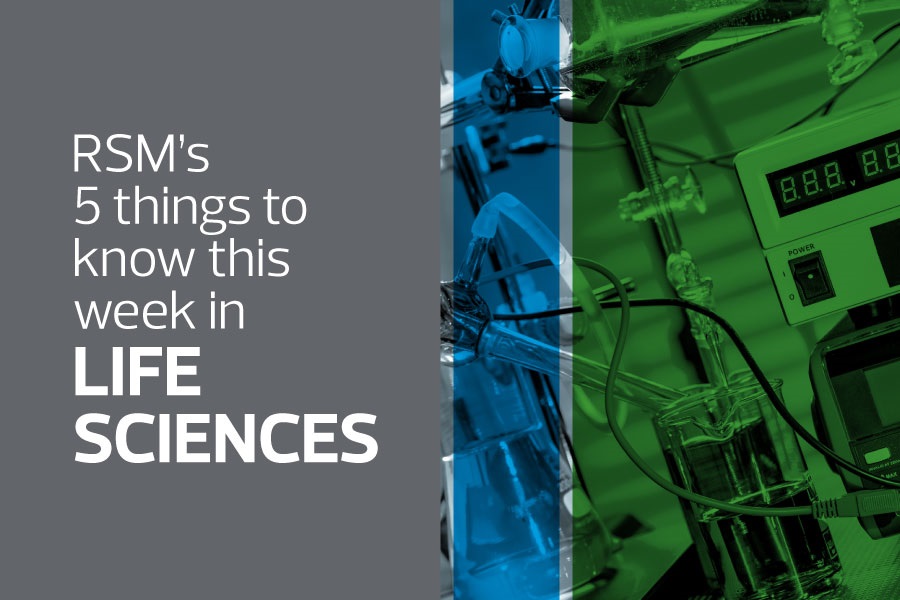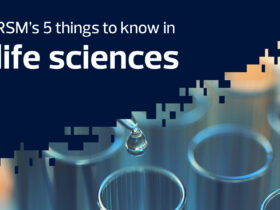This week we highlight changes in drug exclusivity, international mRNA manufacturing expansion, clinical trial challenges in Russia, and recent Food and Drug Administration activities.
Each week we highlight five things you need to know about in the life sciences industry. Here’s the latest.
It’s anticipated to be a more difficult year for early-stage life sciences companies to secure capital and achieve the valuations seen in 2021. Large pharma companies are not without their challenges as there are a significant number of brands losing exclusivity this year. The top 10 drugs going generic represent more than $17 billion in annual sales. As smaller companies look for new ways to access the market or find ways to finance operations and further research, we anticipate an uptick in mergers and acquisitions and strategic partnerships across the life sciences ecosystem in 2022.
The need to improve global access to vaccines and therapies was made abundantly clear through the pandemic and ongoing vaccination efforts. While Moderna’s CEO, Stéphane Bancel, acknowledged that the proposed $500 million facility is unlikely to have a significant impact on the current pandemic because of the estimated build time, this is still an important move to ensure “sustainable access to transformative mRNA innovation on the African continent and positively impact public health.” The move by Moderna is only one example of the continued development of life sciences capabilities across the continent, and recently, nine development institutions have announced a partnership with South African manufacturer Biovac to expand manufacturing capabilities and create a more sustainable system.
Clinical trial recruitment in Russia is being put on hold by international sponsors. While trial administrators await approval from the sponsors to proceed with recruitment, approval alone will not remediate the other challenge related to supply chain disruptions. Clinical trial samples may not be transmitted timely to central laboratories in Europe or the U.S., which could lead to deteriorating sample quality. The situation has Russian trial administrators exploring domestic options.
The FDA recently approved Gleamer’s artificial intelligence-based software that helps physicians quickly identify and diagnose fractures and traumatic injuries by reviewing X-ray images. It’s estimated that fracture interpretation errors represent up to 24% of emergency room diagnostic errors. A recent study published by Boston University School of Medicine showed that Gleamer’s software, known as BoneView, helped improve fracture detection sensitivity while reducing the radiograph read time per patient.
The FDA published new guidance that they hope will improve public safety and limit public health risk from defective medical devices. The new guidance includes training, planning and record-keeping policies and procedures that help companies reduce the time a recalled product remains on the market. Voluntary recalls continue to be the fastest and most effective way to remove defective devices. The administration is continuing to work with manufacturers so they can be ready and limit the risk once a defect or safety concern has been identified.
Source link: https://realeconomy.rsmus.com/5-things-to-know-in-life-sciences-week-of-march-7-2022/ by Justin Culbertson at realeconomy.rsmus.com







